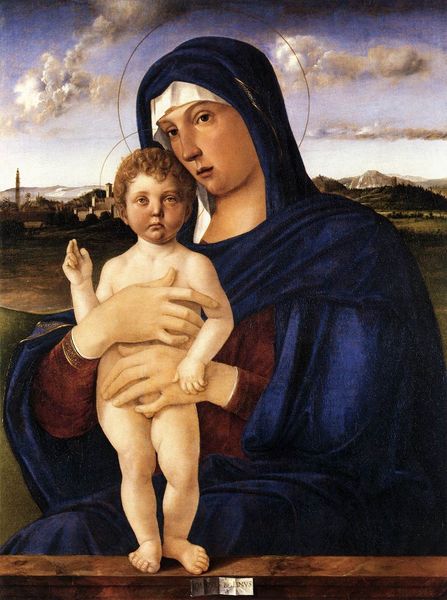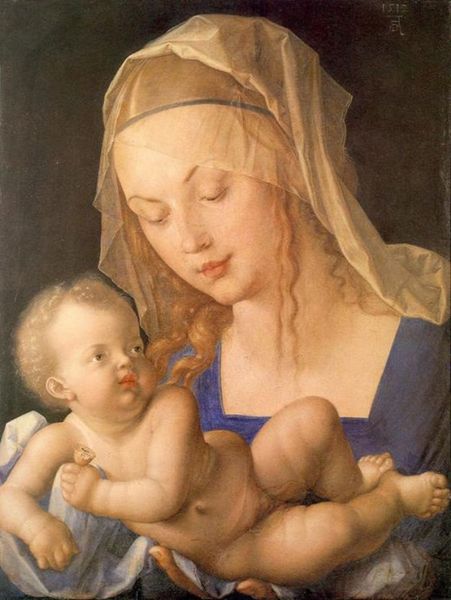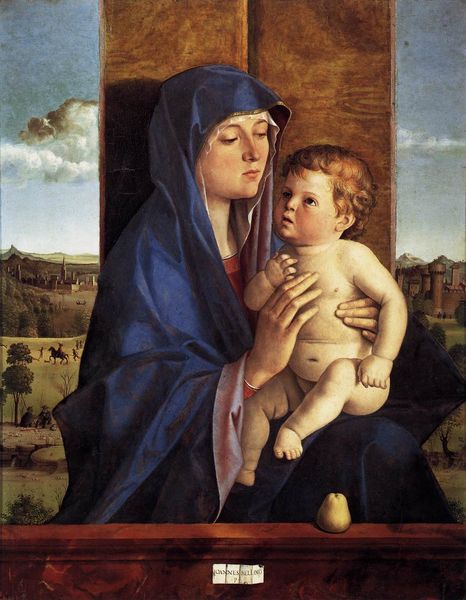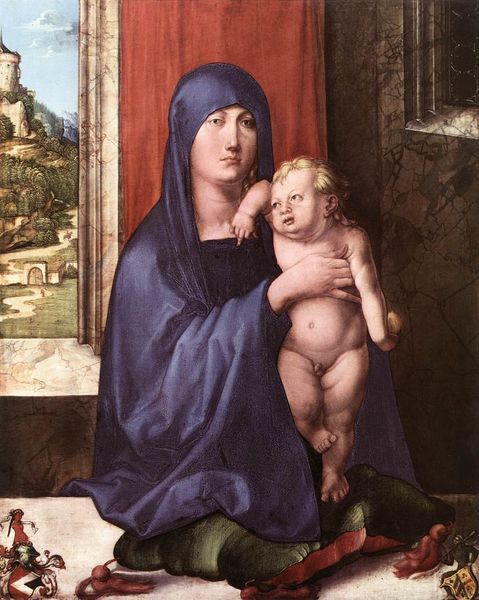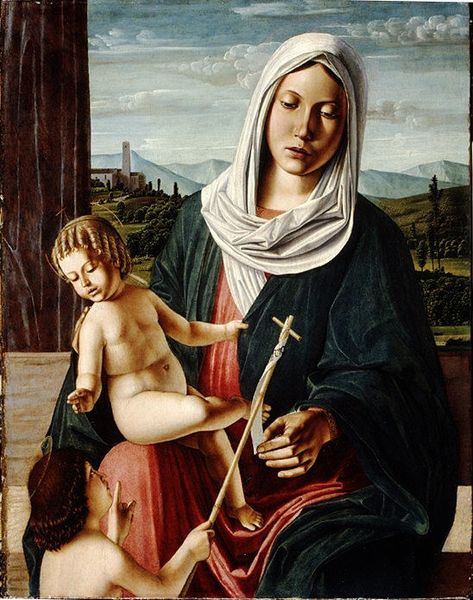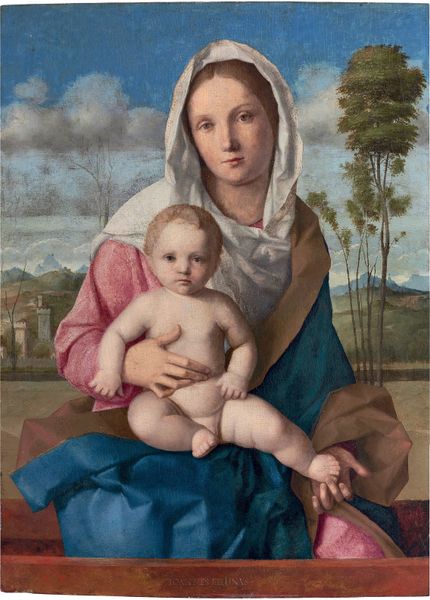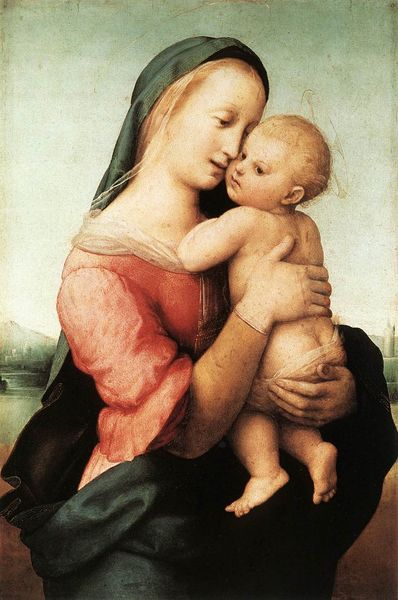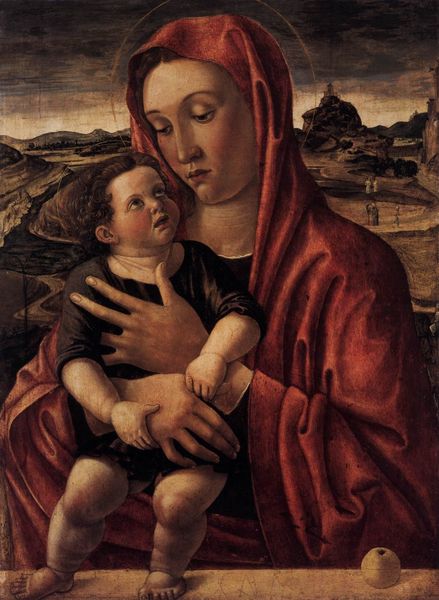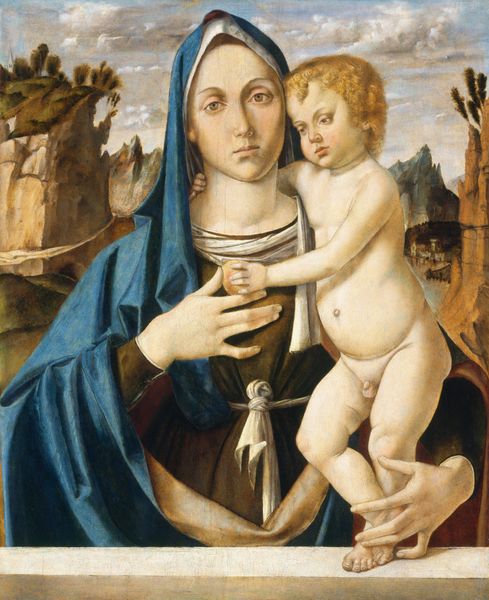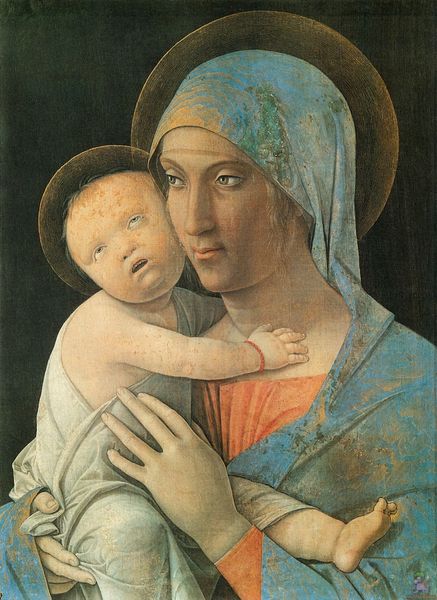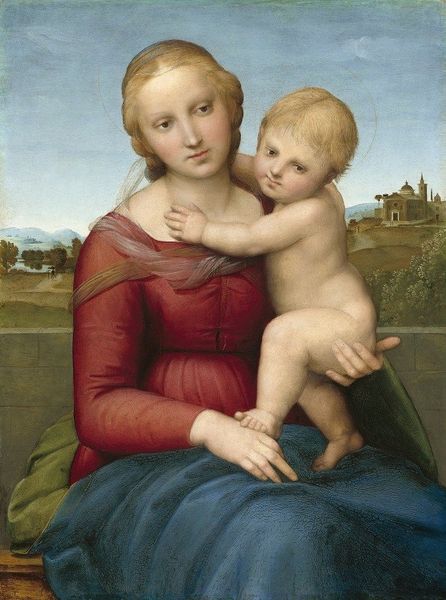
painting, oil-paint
#
portrait
#
painting
#
oil-paint
#
figuration
#
oil painting
#
history-painting
#
italian-renaissance
Dimensions: 58 x 40 cm
Copyright: Public domain
Curator: Before us, we have Antonello da Messina’s "Madonna and Child," also known as the "Madonna Benson," completed around 1470 using oil paint. What are your initial thoughts? Editor: The stillness strikes me first. There’s a quiet intensity in their gazes, a certain serenity that contrasts with the slightly awkward embrace. Curator: Yes, and let’s consider the material qualities that enabled this effect. Antonello's pioneering use of oil paint allowed for precise layering and blending of colors. You can observe how the subtle gradations create depth and luminosity. What socio-economic factors contributed to this material adoption? Editor: The burgeoning merchant class in cities like Venice certainly played a role, enabling the flow of oil from Northern Europe. But it’s not just about trade. Think about the burgeoning Renaissance humanist movement; depictions of the Madonna become avenues to explore idealized motherhood. Is it celebrating female virtue or confining women within societal expectations? Curator: The materiality and composition contribute to our understanding of her role within a complex network of patriarchal expectation and production, though. The Virgin's robe, that particular blue, indicates high cost – most likely, ultramarine pigment derived from lapis lazuli was employed to create that cloak. Patron's desire for material expression and artists who employed labor in executing those goals must be considered in that historical context. Editor: And what do you make of the child’s red robe, draped rather precariously? This could reference his future suffering, the red being a symbol of sacrifice. Curator: And this highlights how visual elements serve complex theological frameworks, that become enmeshed with material value as visual signifiers. Think about who gets access to view it, consume its theological impact, derive social meaning of this image, within what space – all critical conditions, produced via layers of human actions from production to viewing. Editor: These Madonnas become central icons in religious life. Placing artworks in churches or private residences allows us to question both their accessibility and function within a hierarchical system. These details open the artwork up as a means of thinking through systems of power, representation, and identity in the fifteenth century. Curator: Seeing “Madonna and Child” again helps us remember how deeply intertwined materials, manufacture, patronage, consumption and viewing really are, to inform its rich layers. Editor: And hopefully our dialogue illuminated not only its artistic qualities, but also the wider contexts that gave it meaning and still shape our perception of it.
Comments
No comments
Be the first to comment and join the conversation on the ultimate creative platform.

